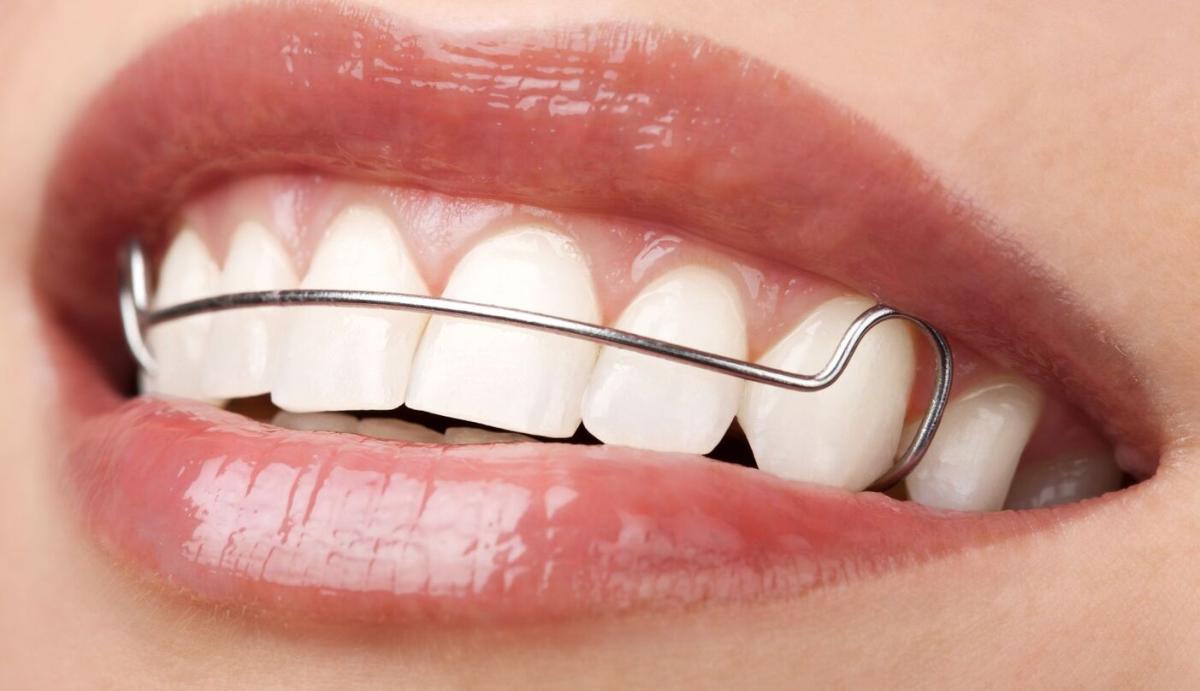What Are The Signs Of A Dirty Retainer?
Keeping your retainer clean is essential for maintaining your oral health and ensuring your orthodontic results last long-term. Many people wear their retainers daily but don’t realize how quickly bacteria can accumulate on them. If you wear Dental Retainers in Islamabad, staying aware of the warning signs of a dirty retainer can help you avoid infections, bad odors, and discomfort. When retainers are not cleaned properly, they can become breeding grounds for harmful bacteria, plaque buildup, and fungal growth.

Why Do Retainers Get Dirty?
Retainers sit inside the mouth and remain in close contact with teeth, saliva, and bacteria. Over time, plaque and food particles cling to the surface, making them susceptible to buildup. Even with excellent brushing habits, retainers still accumulate residue because: They trap bacteria against the teeth
They are worn for long hours
They come into contact with saliva constantly
They store bacteria from handling with unwashed hands
Understanding why retainers get dirty helps you identify early warning signs before problems develop.
What Are the Most Common Signs of a Dirty Retainer?
Persistent Bad Odor
A clean retainer should not smell bad. If yours has a strong, unpleasant odor—even after rinsing—it’s a clear sign of bacterial buildup.
Visible White or Yellow Deposits
Plaque often dries into white, hard deposits that stick to your retainer. Yellow discoloration also indicates poor hygiene or bacterial growth.
Bad Taste in Your Mouth
If your retainer gives off a metallic or sour taste, it’s likely carrying bacteria or fungus.
Cloudy or Filmy Appearance
A clean retainer is transparent and shiny. Cloudiness means plaque accumulation that simple rinsing cannot remove.
Irritation or Gum Sensitivity
A dirty retainer can cause: Red gums
Sores
Increased sensitivity
Mild mouth infections
These symptoms should be taken seriously.
Increased Saliva or Dry Mouth
Both can occur when the mouth reacts to bacteria or foreign buildup on the retainer.
Mold Spots
Black, green, or orange spots indicate fungal growth—this requires immediate replacement or professional cleaning.
Table: Dirty Retainer vs. Clean Retainer
Sign
Clean Retainer
Dirty Retainer
Smell
No odor
Strong, unpleasant odor
Appearance
Clear, shiny
Cloudy, yellow, or white film
Taste
Neutral
Sour, metallic, unpleasant
Fit
Comfortable
Feels tight or irritating
Effect on Gums
No irritation
Redness, soreness, inflammation
Hygiene Risk
Low
High (bacteria, fungus buildup)
Why Is a Dirty Retainer a Health Risk?
Ignoring a dirty retainer can lead to more than just bad breath. Here’s what can happen:
- Gum Inflammation
Bacteria from the retainer can cause gingivitis, which leads to swollen or bleeding gums. - Tooth Decay
Plaque buildup transfers from the retainer to the teeth, increasing the risk of cavities. - Oral Thrush (Fungal Infection)
This is especially common in people who fail to dry their retainer properly. - Bad Breath
Bacteria produce sulfur compounds that create strong odors. - Re-infection After Treatment
If you’re recovering from oral treatment, a dirty retainer can reintroduce harmful bacteria.
How Often Should You Clean Your Retainer?
To protect your oral health, follow these guidelines: Daily
Rinse after every removal
Brush gently with a soft toothbrush (no toothpaste—it’s abrasive)
Weekly
Use a retainer cleaning solution
Soak in mild, dentist-safe cleaners
Every 6–12 Months
Consider professional cleaning at your dental clinic
Consistent care ensures your retainer stays fresh, odor-free, and effective.
How Do You Properly Clean a Retainer at Home?
Rinse Immediately After Removal
This prevents plaque hardening. Brush With a Soft Toothbrush
Use gentle motions to avoid scratches, which trap bacteria . Soak in Mild Cleaning Solutions
Safe options include: Retainer cleaning tablets
Hydrogen peroxide diluted with water
White vinegar solution
Baking soda solution
Never use boiling water—it can distort the retainer .Keep Retainer Dry When Stored .A dry case prevents mold. Wash Hands Before Handling
Prevents transferring bacteria from your skin.
When Should You Replace a Retainer?
You may need a new retainer if: It is permanently stained
It cracks or warps
It smells even after deep cleaning
It doesn’t fit as comfortably
Mold is present
Replacing retainers every 1–2 years is common, depending on usage and care.
Reviews from Patients
"I didn’t know retainers could get this dirty until my gums became sore. After getting a new one and learning proper cleaning steps, everything feels fresh again."
"My retainer had a cloudy look and a weird smell. The clinic explained how to clean it safely, and now it stays crystal clear. Great guidance!"
"I experienced bad taste from my retainer, and that’s when I realized it needed deep cleaning. The dental team helped me restore it perfectly."
Conclusion
Dirty retainers can cause bad breath, gum inflammation, unpleasant taste, and even fungal infections. Recognizing early warning signs—such as odor, discoloration, cloudiness, and irritation—helps prevent bigger oral health problems. Cleaning your retainer daily and soaking it weekly can keep it hygienic and long-lasting. If you notice stains, cracks, or persistent odors, it may be time for a replacement. Good retainer hygiene is essential for maintaining your orthodontic results and overall oral health.
Contact Us — Get Expert Help for Retainer Care
Address : Office Number LG 20 - 21 Interlace Plaza I-8 Markaz Islamabad
Phone : +92 333 5705871
Email : info@glamorousclinic.com.pk
Link : https://www.glamorousclinic.com.pk/